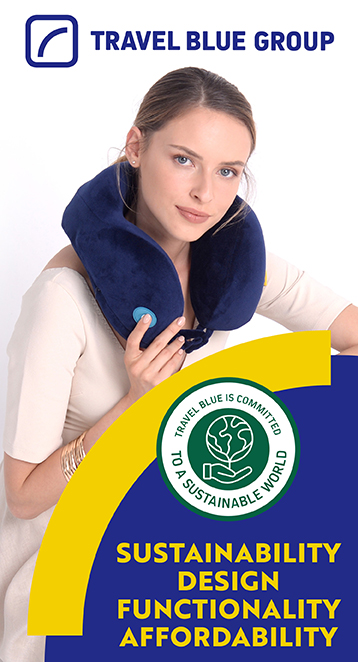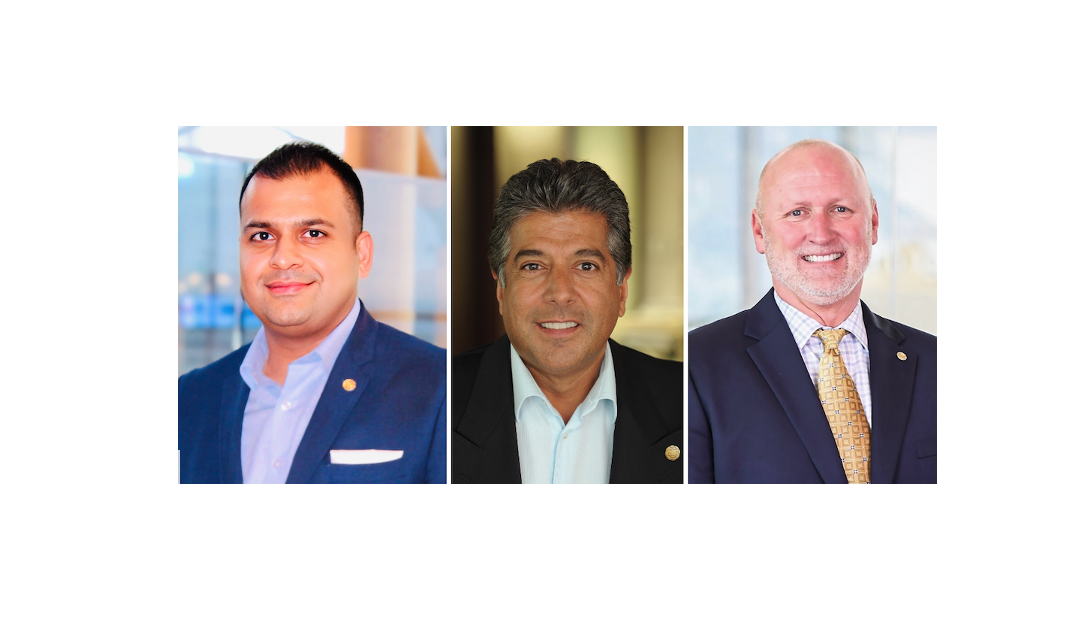Introduction: Johnathan Hanh Nguyen is a man who has not only shaped the history of Vietnam’s aviation, tourism, travel retail and luxury sectors but that of the nation itself. Getting an audience with the Founder & Chairman of Imex Pan Pacific Group (IPPG) – the first by a foreign journalist – is to embark on a voyage of discovery into the country’s remarkable transition from a poor, economically restricted nation in the mid-1980s to an emerging economic powerhouse of Asia nearly four decades on. Martin Moodie reports from Ho Chi Minh City {this interview first appeared as the cover story in a recent edition of The Moodie Davitt eZine}.

Imex Pan Pacific Group (IPPG) Chairman Johnathan Hanh Nguyen’s life tale is inspiring, poignant and powerful in equal measure.
It is the narrative of a man dedicated to his country while simultaneously building a business empire that has transformed the nation’s fortunes across multiple business sectors. And in recent years, it is a story of leadership in helping to guide Vietnam out of the darkness that the COVID-19 pandemic cast over it.
After I arrive at IPP Group (IPPG) headquarters in Ho Chi Minh City, I am ushered into a long board room by IPP Travel Retail Chief Executive Phillip Nguyen, one of Johnathan’s sons, a man who shares his father’s passion and boundless energy for country and commerce.
Johnathan Nguyen enters the room and with a broad smile and warm handshake thanks me for coming to Vietnam, asks how my stay has been and then starts to quietly but with rising enthusiasm open up about his extraordinary 37-year journey. I say journey rather than career for that is indeed what those years have entailed, a journey surely like no other.
Today, IPP Group (IPPG) is one of Vietnam’s leading multi-industry corporations, with interests straddling fashion, food & beverage, airport management, travel retail, distribution across multiple product sectors, investment, technology, out-of-home advertising, and much more.
Importantly to him and his group, Nguyen is equally renowned for his philanthropy and wider Corporate Social Responsibility contributions to Vietnamese society. Besides his leadership of one of Vietnam’s most powerful companies, he is also Chairman of Southern Airports Services Joint Stock Company (SASCO) and of Cam Ranh International Airport Company.
Nguyen launches into the conversation by taking me back 37 years to 9 September 1985. It is a date that will forever remain etched in his memory, the day a Vietnam Airlines Boeing 707 aircraft flew from Ho Chi Minh City to Manila. It was a momentous occasion in Vietnamese history, one that marked the inaugural flight between the two countries and the carrier’s first post-Vietnam war air connection to a non-socialist nation.
Vietnam had suffered under the debilitating constraints of an American embargo for a decade (it would not be lifted until February 1994) following what was then North Vietnam’s liberation of Saigon (now Ho Chi Minh City) and the end of the Vietnam war in 1975.

Johnathan Nguyen (second right) pays a visit to Prime Minister Phạm Văn Đồng after the landmark first Vietnam Airlines flight from Ho Chi Minh City in 1985
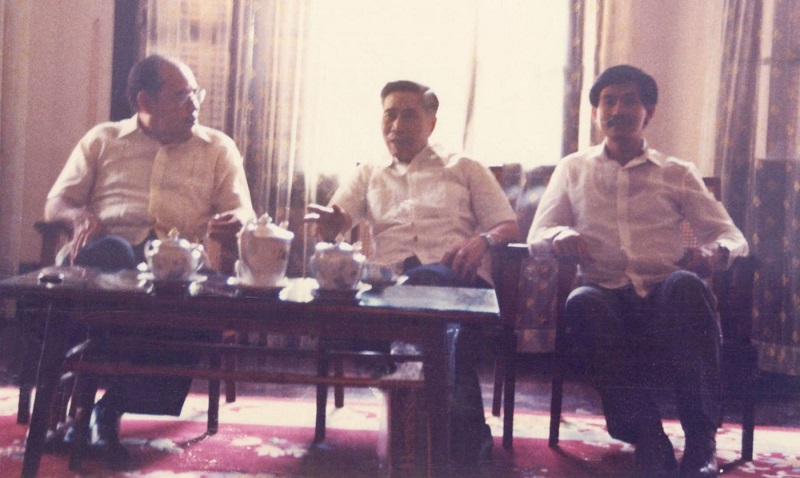
Johnathan Nguyen (right) with Vietnam Minister of Foreign Affairs Nguyễn Cơ Thạch following the historic breakthrough
About IPP GroupIPPG is one of Vietnam’s leading multi-sector corporations. It has extensive interests in fashion and luxury; liquor & tobacco; food & beverage; inflight and airport duty free; out of home advertising (including airports); airport investment, cargo airline; construction and management of luxury shopping centres; real estate; and wider business investment. IPPG Houses: DAFC & ACFC (fashion) See www.ippgroup.vn for more details. |
It was a flight of paramount importance to Vietnam, both symbolically and economically. It is no overstatement to describe it as the moment Vietnam, war-torn for two decades and then closed off from the rest of the world by the US embargo, began to open. The following year, in 1986, the government would introduce the ‘Đổi Mới’ programme of economic and political reforms which aimed to steer the country toward a socialist-oriented market economy.
But the most compelling aspect of that flight is its back story. For it never would have happened without Johnathan Hanh Nguyen. In 1984, based in the US where he had been working as a Boeing sub-contractor Comptroller for over ten years since he had left his native Vietnam, he took his wife and two children to his birthplace of Nha Trang in the south.
The trip followed an invitation to visit the country from the United Nations Vietnam representative office in the US. Later Nguyen visited Hanoi at the invitation of the Council of Ministers where he was asked to meet Vietnam’s then-Prime Minister Phạm Văn Đồng.
It was no random meeting. During that landmark discussion, Vietnam’s leader asked Nguyen for his assistance to open a flight route to the Philippines, seen as a vital economic lifeline for bringing in desperately needed supplies to the poverty-stricken nation. The only other flights at the time were to Moscow and (with authorisation needed on each occasion) Bangkok.
Nguyen’s task wasn’t made easier – some might have said it was impossible – by the fact that the Philippines was a close ally of the US at the time.


At first, Nguyen, despite his painstaking efforts, was no more successful in finding the opportunity to open the flight route. Having established his first business in the Philippines, PHL Impex International, (the forerunner of IPPG) he had partnered with Vietnam Airlines and simultaneously contacted the President of Philippine Airlines and offered to open a route to Manila. However, the regime of President Ferdinand Marcos wanted to avoid any conflict with the embargo of their ally, the United States. Marcos even went as far as to order no further such requests to open the flight route.
Showing a persistence that would mark his whole career, Nguyen kept trying. And then on that fateful September day, things suddenly and dramatically changed. He recalls receiving a call from President Marcos’ assistant, whom he had asked for help with his mission. On the evening of 4 September 1985, she called and advised that the President was in a very happy mood – now was the moment, perhaps the only one. President Marcos would see him briefly.

Johnathan Nguyen revisits the momentous day with Martin Moodie at IPP Group headquarters in Ho Chi Minh City
Desperate in his desire to succeed and to open his country to the rest of the world but knowing his persistence could land him in deep trouble, Nguyen arrived at the Presidential Palace, his heart thumping. Armed with the relevant documentation from the Philippine Foreign Affairs Department, he could only hope the President would sign.
Marcos gave it a cursory read. And then signed. When Nguyen went outside the Presidential office, he saw Mr Trần Tiến Vinh, the then first secretary of the Vietnam Embassy. After hearing the good news, the official hugged him, shed tears and said, “Hanh, you are a hero of our country.” Both men wept with the emotion and sheer significance of the moment. In Hanoi, there was euphoria and relief among the waiting members of the Politburo. “It was mission completed,” Nguyen recalls.
Five days later the inaugural return flight from Ho Chi Minh City landed in Manila. Onboard were 31 Vietnamese aviation officials and media representatives. When Nguyen saw the red Vietnamese flag with its yellow star fluttering briskly in the wind as part of the official greeting, he was overcome with emotion.
“Oh my god, this is my country – this is Vietnam. I was shaking in my heart,” he remembers. “I will never forget that flight. Everyone was aware that this was an historic moment for Vietnam. I did it for the country and the people of Vietnam.”

General Secretary Nguyễn Phú Trọng (left) congratulating Johnathan Nguyen on receiving The First Class Labor Medal, a symbol of his contribution to his native country
The return flight carried some 30 tonnes of goods from American expatriates intended for their relatives in Vietnam. The long-shut door had cracked ajar. But Nguyen was not finished there. “My job was done – but then again it was not,” he remembers.
Deeply moved by the fate of the Vietnamese people, many of whom were trying to escape hardship as boat people (between 1975 and 1992, millions of Vietnamese fled the country in one of the largest mass exoduses in modern history), he decided he should stay and help the government stabilise and further connect Vietnam with the world.
That decision was not easy, especially as the Nguyens’ two young children had contracted dengue fever during the 1984 visit. The family could afford medicine but there was none to be found due to the sanctions. Tendered lovingly day and night, the kids made it through but Nguyen was acutely conscious that many others would be less fortunate due to a chronic countrywide lack of medical care and treatments.
“Here was I trying to help my country and yet the mosquito from my country had bitten my children,” he remembers of the poignantly symbolic events. “So, I felt hesitant about staying because my children were not safe. But how about the millions of children who got sick and the many that passed away? How about the millions of people who were escaping by boats under extremely dangerous circumstances? My heart was bumping. I said that I had to do something.”
And so he did. Soon after the new air route was opened, Nguyen visited a Vietnamese refugee camp in the archipelagic province of Palawan in the Philippines. It was a seminal experience. He urged those he met to advise their relatives in Vietnam to stop trying to escape illegally, vowing to them that conditions at home would improve.
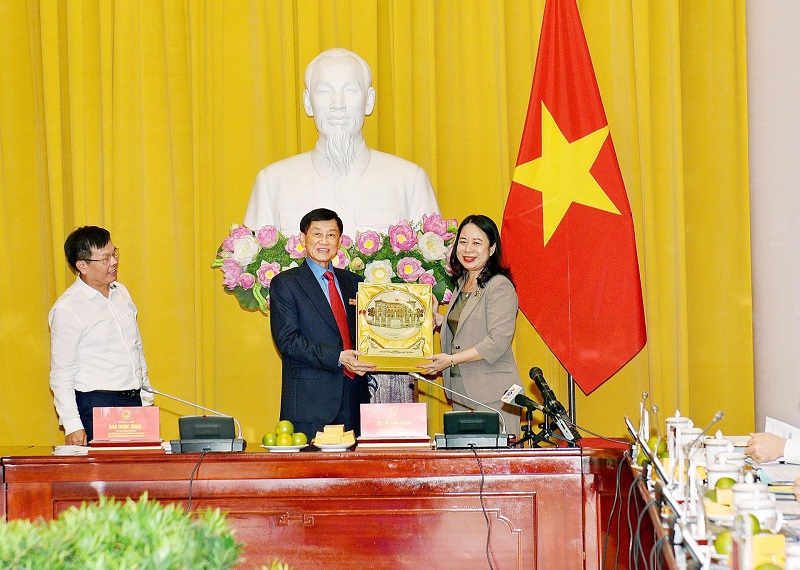
Vice President Vo Thi Anh Xuan, Chairwoman of the Vietnam Children’s Fund, presents a special award honouring Johnathan Nguyen’s contributions to charity
In a December 2021 interview with a local reporter, Nguyen related how he promised the refugees he met that he would work with the US, Vietnamese and Philippines governments to reconnect families through a scheme known as the Orderly Departure Program. Once again, he delivered on his pledge and flights from Vietnam subsequently carried individuals to the Philippines before being reunited with their families in the US and other countries around the world.
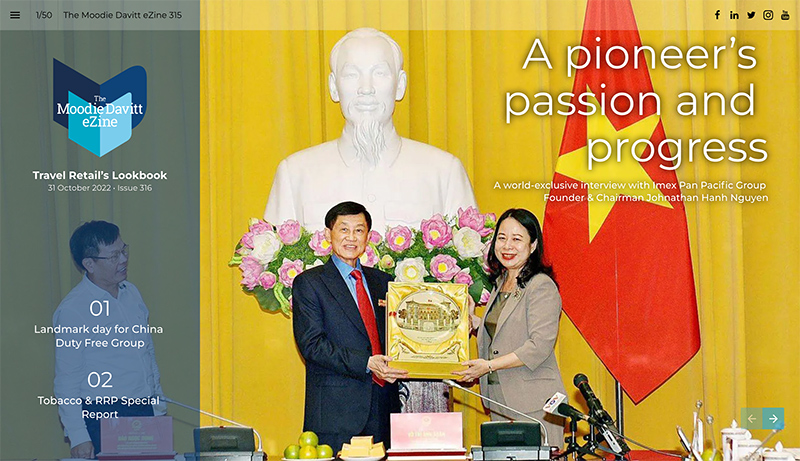
Nguyen also successfully sought assistance from American lawyers to find a legal way to bring urgently needed medication from the US into Vietnam. The eventual solution was for the items to be sent by overseas Vietnamese to their relatives through flights from the Philippines by a humanitarian gift programme – the lifeline that Nguyen had opened up.
He also found a way for foreign remittances to be sent to Vietnam, helping build the nation’s foreign currency reserves and thus allowing those citizens with relatives overseas to have money to spend on household items and other necessities. In the process, he was creating wealth and jobs in Vietnam.
Future positive
Roll forward nearly four decades and Nguyen still sees his first and foremost role in business as contributing to his country. “I planned ten years… ten years… ten years… ten years already. Four lots of ten years, I’m not young, I’m 72,” he says with a broad smile, his infectious energy belying that statement.
“The first ten years we opened flights and we normalised relationships with the American government – that was my first step. Second step, I brought in the investors. We have brought in 47 joint ventures, worth around US$500 million and we have created about 25,000 jobs. I didn’t get involved in projects to make money immediately; instead, I was seeking to generate labour sustainability, create employment. That was the second ten years.
“For the third ten years, I tried to attract as many international well-known brands as possible because I knew that any country wanting to reach a high level in the world must have a tourist industry, there is no doubt about that.”
Vietnam was graced with magnificent natural wonders such as Ha Long Bay but it needed more than that to attract the kind of tourists who would spend significant money in the country. “Besides the attractions and the local products, they wanted to look for a Chanel bag, a Rolex watch, for Cartier items, Dolce & Gabbana, and so on. Duty free is an absolute red button for any country,” Nguyen comments.
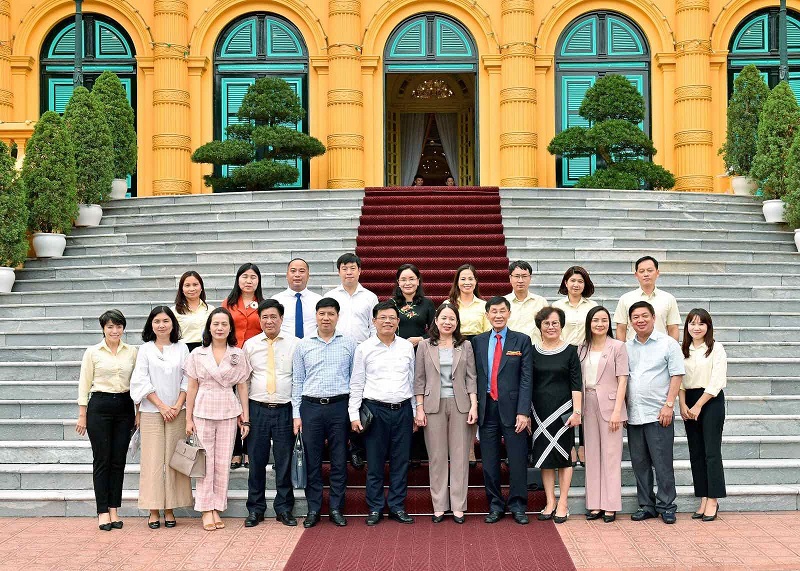
State recognition: Johnathan Nguyen pictured in a celebratory shot with Vice President Vo Thi Anh Xuan, Chairwoman of the Vietnam Children’s Fund, after his special award
His initial breakthrough came with three world-renowned brands, Ferragamo, Burberry and Bally. “They were the ones who opened up for me my fashion business – they gave me full support,” Nguyen recalls. Initially, other brands watched on before the initial trickle of partnerships became a flood. Big names such as Hermès, Chanel and Louis Vuitton followed.
Brands were given tender individual love and care when being introduced into Vietnam rather than being buried in a portfolio. Discounting was avoided and Nguyen ensured no fake product got anywhere inside his company, unlike a few companies within the country’s retail and distribution trade. To ensure appropriate positioning for each brand, he created dedicated divisions within the group, including luxury-focused DAFC (Rolex, Burberry, Cartier, Ferragamo, D&G and around 50 other front-line names) and ACFC & CMFC, which features mid-tier fashion brands from around the world.
Today IPPG represents more than 108 brands, all carefully nurtured rather than being developed with any kind of quick-buck mentality. Others can enter the market and take shortcuts, Nguyen says, but his long-term approach ultimately pays off in respect from clients and consumers alike. “That’s why the brands keep coming to us,” he observes.
In wines and spirits, another strong suit, IPPG has a joint venture with Moët Hennessy, helping to build the French drinks powerhouse’s portfolio, spearheaded by Hennessy, into a dominant market position. Nguyen fondly recalls LVMH Chairman Bernard Arnault thanking him during a trip to Vietnam for his efforts in helping develop LVMH brands, including Moët Hennessy and DFS in the country.
“So, everything I do in Vietnam is about being patient, patient, and patient,” he says, repeating the words firmly to emphasise the critical principle. “Maintaining reputation and keeping all things transparent. So, the brands trust me just as the government trusted me from the beginning. I promised and I delivered.”

Up close with a living legend: Martin Moodie with Johnathan Nguyen after the IPP Group leader’s first-ever interview with a foreign journalist
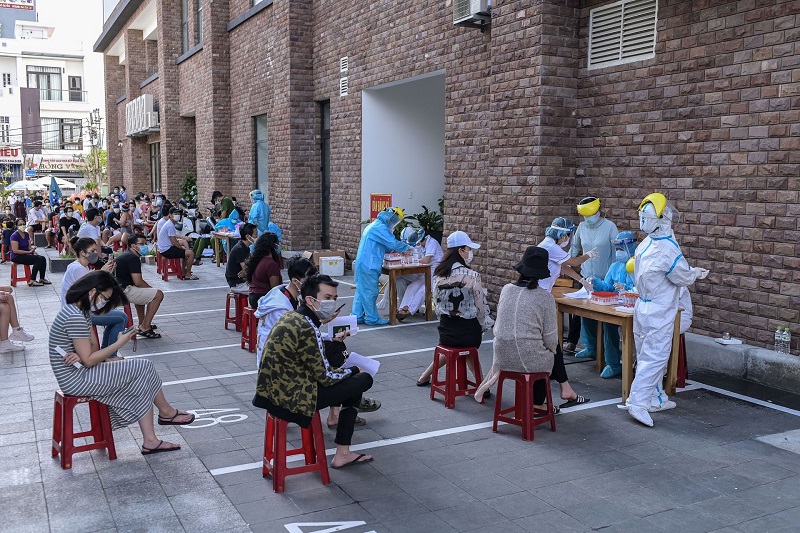
Local citizens queue up for their vaccination shots in Da Nang in August 2020. The high vaccination uptake has helped the country rebound quickly from the pandemic. {Photo: Shutterstock; Lusin Da Ra}
Rebounding from the COVID effect
Until early 2020, IPP Group was a runaway success story, a key accelerator of an economy that had moved into overdrive. And then the national engine was brought to a shuddering halt by the COVID-19 pandemic.
Despite a highly successful early response to the pandemic, the country reeled under a new, more serious outbreak from 2021, leading to what would in time become the highest number of confirmed cases in Southeast Asia, and the 13th highest in the world.
Today, though, Vietnam is bouncing back with remarkable speed and rigour. A new report from Standard Chartered posts a particularly rosy prospect of H2 economic recovery with forecast GDP growth of +10.8% and +3.9% year-on year in Q3 and Q4, meaning full-year growth should reach +6.7%.
Tourism is playing a critical role in that revival, with Vietnam News Agency reporting in late August that the sector had generated double-digit growth for four straight months. According to an economic growth forecast for East Asia and Pacific region published by the World Bank in late September, Vietnam’s economy leads the region with a growth rate of +7.2% this year.
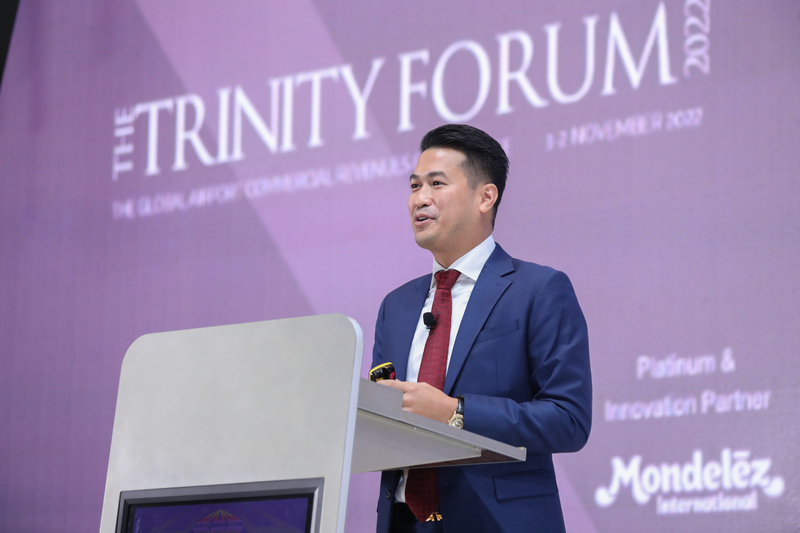
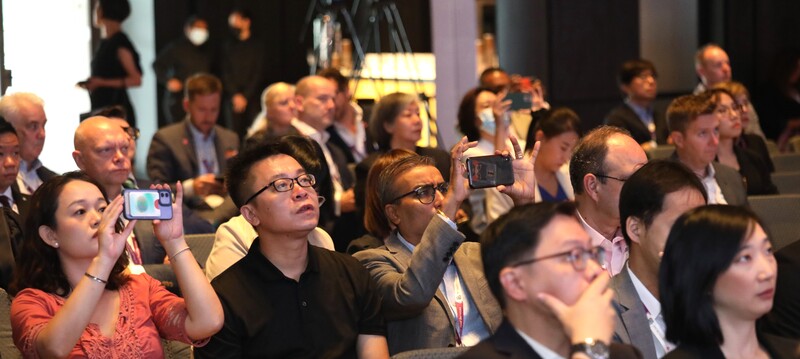
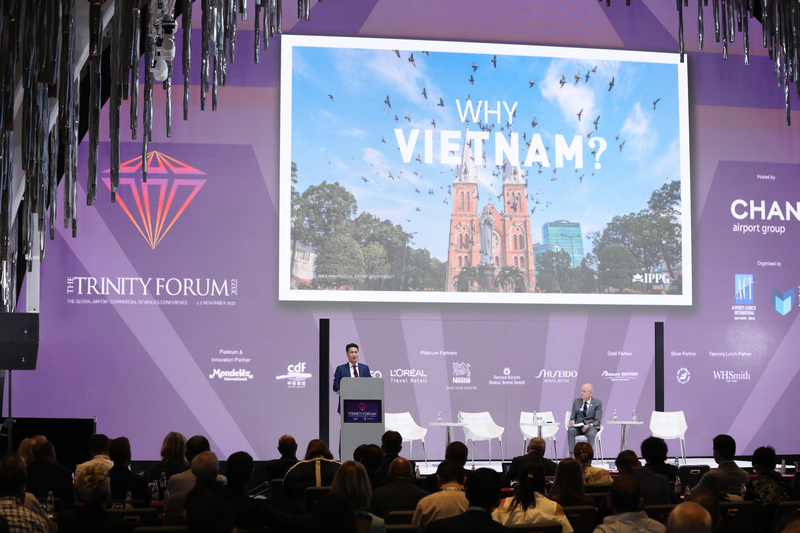
The country attracted over 350,000 international visitors in July, triple the monthly average in H1, the report said, with numbers dominated by arrivals from South Korea, Europe and the US. When the Chinese visitors, who are crucial to Vietnam’s tourism sector, return – hopefully in early 2023 – that will be the start of Vietnam’s spectacular tourism growth, Nguyen reckons.
The past two years have been a brutal and prolonged crisis, but from something very bad something good has emerged, Nguyen says. “Now we have a chance to grow,” he comments. He draws an allusion with the country’s national soccer team, which enjoys huge nationwide support from some of the world’s most passionate fans.
From traditionally being a comparative minnow relative to the giants of the Asia game such as South Korea and Japan, Vietnam has grown dramatically in stature over the last few years, including attaining the top position in the joint World Cup/Asian Cup qualifying group in late 2019.
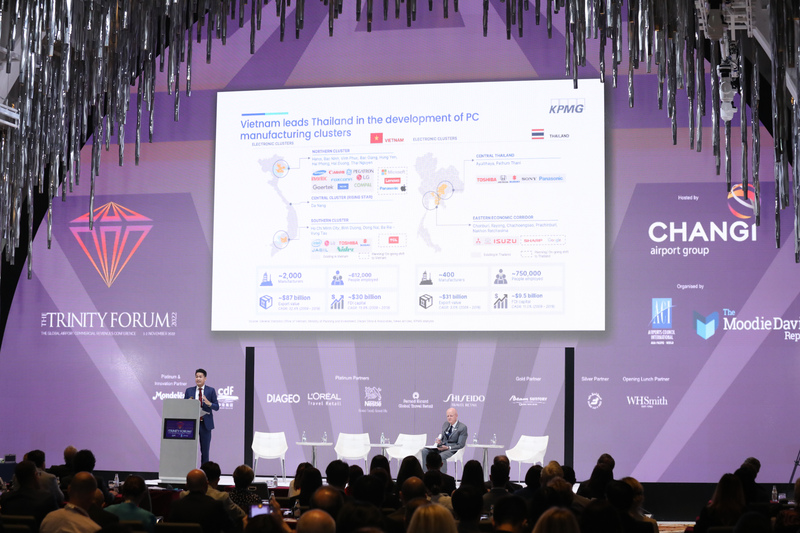
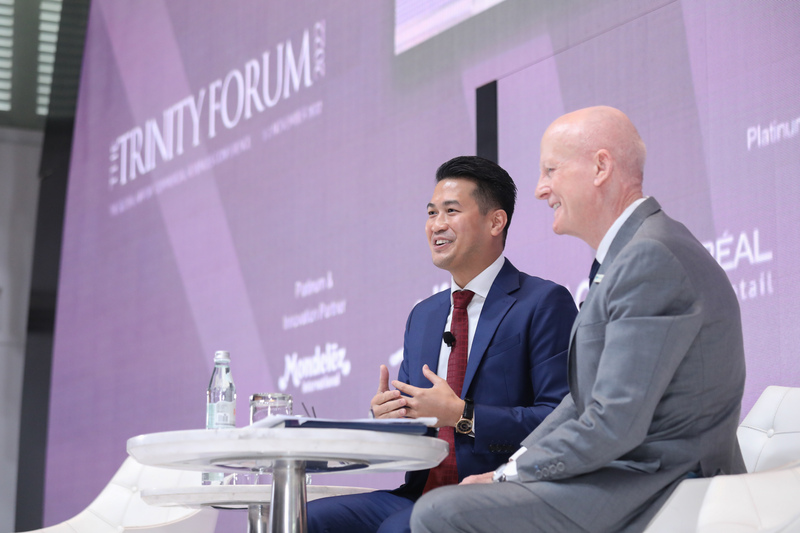
The country can excel in business just as in sport, Nguyen says. “I am so proud of them. So let’s not think about what we cannot do but what we can do. We are growing.”
He says that COVID has resulted in profound changes across Asia, with countries such as Japan and South Korea at various points “on oxygen” socially and economically. Vietnam was traumatised too, he says, but the country’s widespread embracing of a vaccination programme has enabled it to bounce back strongly.
As of 24 September, around 260.2 million doses had been given (equivalent to 253% of the population) across the country with an impressive 86.1% of people having received two doses and 67.4% three.
“With COVID we were hit badly, Vietnam was lying down in our hospital bed like the whole world,” Nguyen comments. “But with the government having successfully completed the vaccine mission, everyone here got vaccinated and we have been able to get up out of our bed and move. Now we need to have a strong body; we need to have strategic partners to develop the international finance centre; we also need to have IPP Air Cargo and related logistics professional hubs.
“We need these 45 projects worth hundreds of billions of US Dollars,” he adds, gesturing towards the files in front of us. Serious projects. Serious money.
Aviation as the central element in the chain
Vietnam’s wider tourism, travel, retail and related business sectors are anchored by a common component, Nguyen emphasises. Aviation. “You cannot break the chain,” he says. The thinking – evidenced by the myriad documents on the boardroom table in front of us – is to create a seamless aviation, travel, tourism and financial ecosystem, one that will bring benefits not just to the big cities such as Hanoi, Ho Chi Minh City and Da Nang but to the whole of Vietnam.
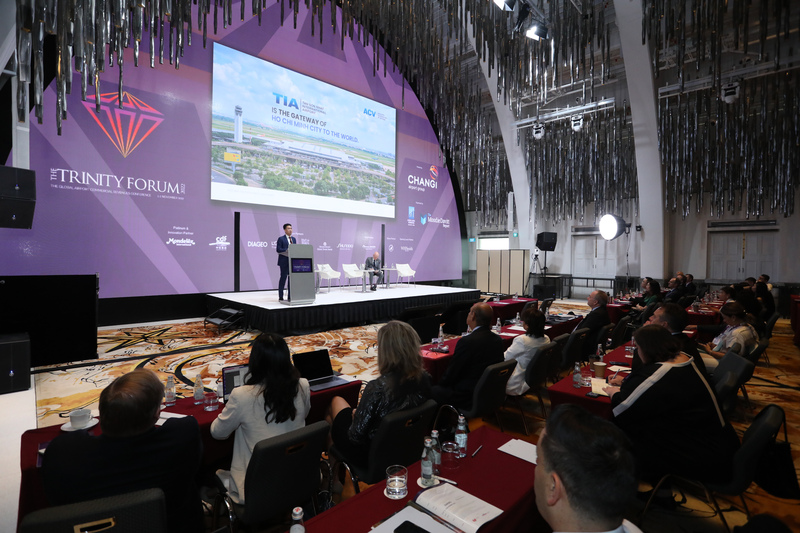
Most of the mega projects IPP Group is working on are linked to tourism, already critical to the country’s earnings but potentially far more so in future. “All countries, whether rich or not, are looking for tourists,” Nguyen says. “Vietnam has many attractions for them, from Ha Long Bay to the north, which is beautiful; to Da Nang or Phú Quốc with their famous resorts; or Ho Chi Minh City with its renowned attractions.”
But that’s not enough, he emphasises, returning to his earlier theme of giving international tourists the additional facilities they desire and can readily find elsewhere in Asia.
Prime among them are casinos, permitted in the country for international visitors and qualifying Vietnamese since 2017. International visitors also want high-class downtown duty free along the lines offered by DFS, Lotte Duty Free and The Shilla Duty Free in other markets, Nguyen adds.

IPP Group has embarked on a range of hugely ambitious tourism-related projects across Vietnam
Developing mega projects and why 2+2 does not make 4
Vietnam must be able to match, perhaps exceed, the quality of tourist offerings abroad, he insists. VAT refund systems for tourists; a Hainan-style offshore duty free model; smart cities; an international finance centre; theme parks and hugely ambitious mixed-leisure developments all number among IPPG’s project plans. In short, let Vietnam get its fair share of the tourist dollar in Asia and wider foreign investment.
“Look at Hainan, that’s what I want to develop here. Hainan has exploded,” Nguyen says. “I assure you that Vietnam can become like this. Our dream is that Vietnam becomes the Asia tiger and we are working hard to make our dream come true.”
Johnathan Nguyen’s confidence is based partly on natural instinct but also partly on history. “I believe my dream will come true because as a young man of 34 years old I opened the door for Vietnam. Who could have believed that? And after 37 more years, we have 45 projects here to develop.”
The multiple IPP Group projects, such as this premium outlet development on Phú Quốc island, focus on the broader travel ecosystem
Johnathan Nguyen may be into his 70s but he still thinks as innovatively as that young man of 34. He talks insightfully, for example, of the role that Al (artificial intelligence) must play in Vietnam’s future, arguing that the country must lead, not follow, the charge with such contemporary technology.
Fifty years ago, Vietnam was a poor farming country, he points out, with an agricultural economy based on rice-growing. Today it is an emerging technological nation but one that must move faster to catch up with the world’s trends. “The next generation will know Al, adopt Al, and work with Al. We must get ready for Vietnam to catch up faster with other countries. That is my aspiration today. We must go faster. What is two plus two? Four? No, two plus two is 22.”
He chuckles as he says it, the kind of calculation that excites someone who pledges to always deliver on his words and his dreams. The boardroom and his office next door, crammed with awards from the state, government, ministries, industries, and leading international partners, bear testament to the enormous influence, impact and imagination of a man who helped open up Vietnam to the world nearly four decades ago and has never stopped serving it ever since.
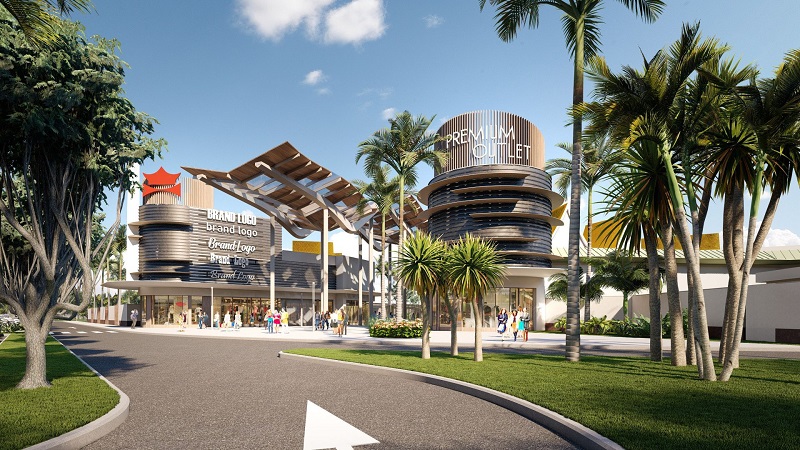
(Above and below) The premium outlet project will bring much-needed tourism spending to Phú Quốc island and create many employment opportunities
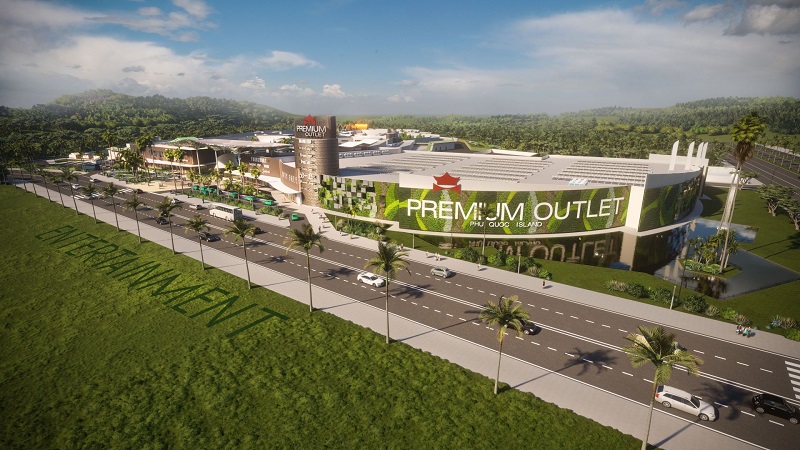
Selected IPP Group proposal projects
Phú Quốc Free Trade Zone: A mega project on a beautiful island in the Gulf of Thailand, 45km from the southern tip of Mainland Vietnam. Viewed as a key resort market of the future, Phú Quốc has already seen major infrastructure developments, including a cable car, luxury resorts, casinos and other mixed-leisure developments.
IPPG plans to create a 101-hectare smart city, healthy city and theme park with a focus on sustainable development, ecological tourism, wellness tourism, medical tourism and digital transformation. It will feature a vast premium outlet shopping centre and an integrated resort, hotel and casino; plus an entertainment complex, night market, and healing resort.
Da Nang Hillside Zone and Hillview Duty-Free Smart City: Another hugely ambitious project to be developed on an 850-hectare site. Described as “an international smart, one-stop destination defined by nature for wellness, retail, and leisure experiences”.
Five Peaks Resorts, Da Nang: A casino project inspired by the region’s five towering limestone peaks, each named after one of the elements.
Da Nang Financial Center: Designed as a place of choice for entrepreneurs and cutting-edge technologies, the development will offer a state-of-the-art modern financial trading floor. Hotels, restaurants, branded apartments, and office towers will complement the facility, which will also feature a world-class shopping district. A vibrant community feel will focus on art, design and events.






